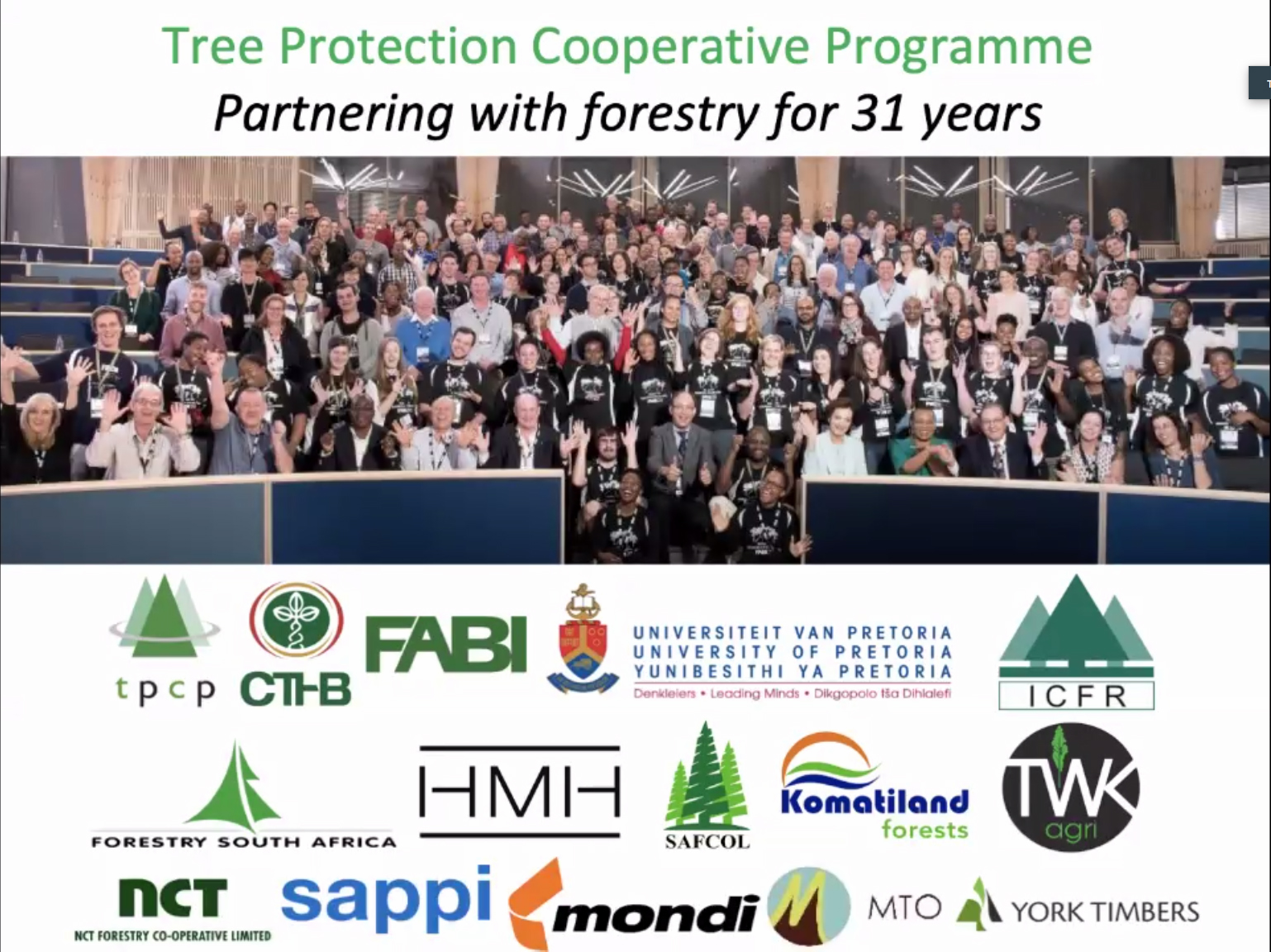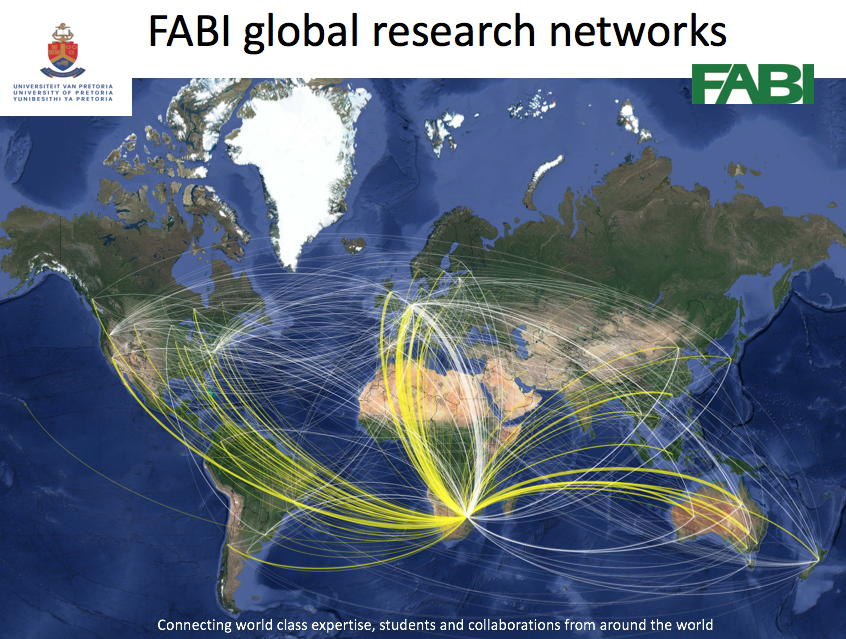The Tree Protection Co-operative Programme: 31 years of serving the forestry industry 2017-05-17
The situation the world’s population currently finds itself in with the global-spread of the COVID-19 virus - just one invisible pathogen - bears direct parallels to the research work that has been done in the TPCP over the past 31 years in combatting plantation tree pests and diseases. Much like the COVID-19 pandemic was a global problem, so too were invasive pests and pathogens a global tree health burden. Speaking at the 31st Annual meeting of the Tree Protection Co-Operative Programme (TPCP) and DSI-NRF Centre of Excellence in Plant Health Biotechnology (CPHB), Prof. Irene Barnes pointed out that it is perhaps co-incidental that the TPCP has, over the past year, also worked on 31 groups of pests and pathogens, mainly affecting plantation-grown Eucalyptus and Pinus. This is made possible through the work of a very large team of over 80 researchers, postdoctoral fellows and students who work in the TPCP, one of the largest tree health research programs in the world.
The TPCP’s research activities support the development of integrated pest management strategies for the South African forestry industry. Continuing on the COVID-19 comparison, Prof. Barnes explained the research themes in the institute, and used examples of numerous pests and pathogens studies by the group over the past 31 years.
When dealing with a new disease outbreak the first response is containment to limit its spread - not unlike the lockdown implemented in most parts of the world in response to the COVID-19 pandemic. If the disease outbreak was small enough it could be eradicated. Unfortunately this has not been possible in many cases in South Africa or in other parts of the world because pathogens and pests are identified too late or the seriousness of their presence is not realized.
The next step is to identify the causal agent (bacterium, fungus, insect or virus) of the epidemic. Accurate identification is critical as it lays the foundation for downstream research and applications. Once you have a proper identification, you can develop a diagnostic test. The next step is to understand the distribution and patterns of spread of the causal organisms, in order to contain or slow it spread if possible. An understanding of the biology and ecology of the pathogen is critical to its management. For example, understanding the range of environmental factors that might influence the invasion ability or life cycle of a species is important. It is also critical to the genetics of the pathogen and the populations of the pest or pathogen; whether it is clonal or diverse, stable or changing through sexual reproduction or adaptation?
All of this research, taken together, will help the TPCP and its partners to develop integrated pest and pathogen management strategies/or control for the South African forestry industry.
The TPCP also takes a pro-active approach to consider possible future threats to the domestic forestry industry in order to prepare for them. Professor Barnes explained that FABI and the TPCP’s strength lies in its existing strong international research networks, where researchers are working collaboratively, with the goal of Keeping Trees Healthy.
View a recording of Prof. Archer's presentation by clicking here.



